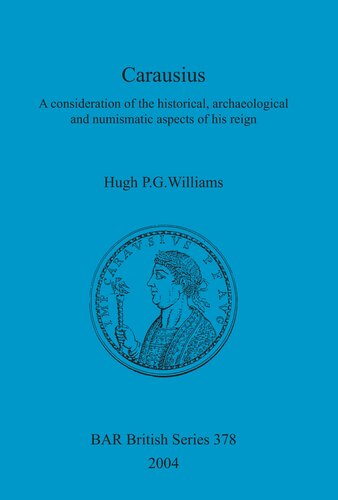

Most ebook files are in PDF format, so you can easily read them using various software such as Foxit Reader or directly on the Google Chrome browser.
Some ebook files are released by publishers in other formats such as .awz, .mobi, .epub, .fb2, etc. You may need to install specific software to read these formats on mobile/PC, such as Calibre.
Please read the tutorial at this link: https://ebookbell.com/faq
We offer FREE conversion to the popular formats you request; however, this may take some time. Therefore, right after payment, please email us, and we will try to provide the service as quickly as possible.
For some exceptional file formats or broken links (if any), please refrain from opening any disputes. Instead, email us first, and we will try to assist within a maximum of 6 hours.
EbookBell Team

0.0
0 reviewsThis study relates the significant bronze coinage of the usurper Carausius, 286-93, to the archaeological and historical evidence from the period. Since the publication of Roman Imperial Coinage. Volume V(ii) in 1933, many new and significant coin types have appeared. Several important hoards have been published in the intervening years which throw a new light on discussions of the chronology of the coinage, enabling a modified sequence of issues to be postulated. Part of an important hoard discovered inthe 1980's has been reconstituted. Much information regarding the archaeology of Roman Britain in the latter half of the third century has been published during the last three decades, and this is discussed in conjunction with the coin evidence of site finds. Consideration is made of the probable methods employed in the striking of the coinage, and a new mathematical method is invoked to yield a more accurate picture of the supply of coinage under the Carausian administration. A study of the metrology ofthe bronze coinage is made and this includes the illustration of the metrology with a three-dimensional surface using computer graphics. Consideration of the geographical distribution of the index-marked coinage has enabled a new interpretation of the location of the minting centres to be forwarded. The older historical sources have been reconsidered and importantnew interpretations have been made. Certain aspects of the coinage which relate to the history have been examined in the light of newly discovered coin types. The study involved the examination of approximately seven thousand specimens of the coinage from both public and private collections and excavations.